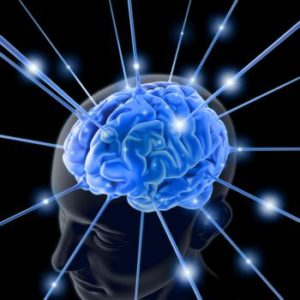 Characterized by altered consciousness, inhibited sensory activity, and muscle relaxation, virtually all animals need sleep.
Characterized by altered consciousness, inhibited sensory activity, and muscle relaxation, virtually all animals need sleep.
Humans spend almost one third of their entire life snoozing.
Spending a huge amount of time with your eyes closed, unresponsive to external stimuli is a dangerous pastime; especially for animals that are on the menu for local predators.
For sleep to have evolved and been conserved in so many species, it must be vital to the survival of an organism.
Sleep is sometimes regarded as being similar to unconsciousness, but it is an entirely different state of being.
Despite outward appearances, sleep is a neurologically busy time. The electrical output from the brain rises and falls in a well-orchestrated symphony of activity.
The function of sleep
There are a number of theories that attempt to explain what is happening during sleep; these theories are not necessarily mutually exclusive and, no doubt, there are other functions we are yet to uncover.
Some scientists theorize that sleep gives the brain a chance to clear out waste from the fluid around cells, including proteins, such as amyloid beta. Also, sleep appears to team up with the immune system to increase healing abilities. For instance, wound healing in rats is slower if they are sleep-deprived.
Additionally, sleep has deep ties with memory. A study published in 2007 found that, in a sleep-deprived group of participants, working memory was reduced by 38 percent.
Researchers have found that different stages of sleep and the patterns of neuronal activity they create play an important role in memory consolidation.
A recent investigation, published in PLOS Computational Biology, set out to create a computational model that could imitate these patterns to provide further insight into the memory functions of sleep.
Patterns in sleep
Some models of sleep are based purely on the activity of single neurons, others are more abstract and less detailed; both methods have their benefits and pitfalls. Instead, the German team used a neural mass model. In a neural mass model, the activity of a small group of neurons is scaled up to estimate the behavior of larger groups of neurons.
As the authors explain: “neural mass models represent a compromise between a very detailed and an abstract modeling approach.”
In previous work, the researchers – Michael Schellenberger Costa and Arne Weigenand of the University of Lübeck, Germany – modeled the activity of the sleeping cortex, the outermost layer of the brain. Their latest study set out to expand on this work.
Scientists have recently found that memory consolidation is likely to come from the interplay between the cortex and the thalamus.
The thalamus is situated between the cortex and the midbrain and relays sensory and motor signals from the body to the cortex. It also helps regulate alertness, consciousness, and sleep.
Sleep rhythms are thought to be generated in the thalamus and then synchronized by interacting with the cortex. The thalamus appears to play a particularly important role in producing and controlling slow wave sleep (SWS).
Specifically, the team wanted to look at brain activity during the second and third stages of NREM sleep – non-rapid eye movement sleep. During NREM, EEG readings are particularly slow but with a high voltage. Breathing and heart rate is regular and slow, blood pressure drops, and no dreaming takes place.
Replicating memory consolidation
The team was able to include thalamocortical coupling (talk between the cortex and thalamus) in their latest model and faithfully replicate memory-related sleep patterns. In order to confirm the accuracy of the patterns they generated, they successfully matched their computer-generated patterns with EEG data from a human sleep study.
Certain stimulation techniques (transcranial electric and auditory stimulation) are known to enhance memory consolidation during sleep; the team’s model also managed to predict the EEG effects of these techniques, confirming the model’s accuracy even further.
The authors write:
“It is fascinating to see that a model incorporating only a few key mechanisms is sufficient to reproduce the complex brain rhythms observed during sleep.”
The model itself is relatively simple, meaning that it will play a very useful role in the future study of memory consolidation. Sleep science is a difficult nut to crack; computational modeling is an invaluable tool that is set to slowly prize open the doors of understanding.
MNT DT






